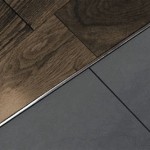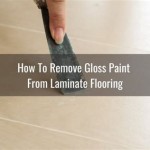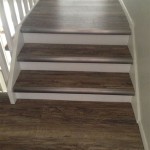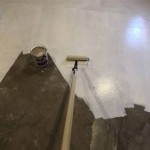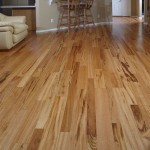How To Remove Tape Marks From Wood Floors
Adhesive tape, a ubiquitous tool in households and construction, often leaves behind unsightly residue on various surfaces, including the sensitive surface of wood floors. This residue, if left unattended, can attract dirt and grime, making it even more difficult to remove and potentially damaging the floor's finish. Understanding the composition of adhesive residue and the properties of wood flooring is crucial for effective and safe removal. This article will explore effective methods for removing tape marks from wood floors, focusing on techniques that minimize the risk of damage and restore the floor to its original condition.
The residue left by adhesive tape typically consists of the adhesive itself, which is often a synthetic polymer, and potentially some of the backing material from the tape. This mixture can bond strongly to the wood's surface, especially if the tape has been in place for an extended period or exposed to heat and sunlight. Different types of wood floors, such as hardwood, laminate, or engineered wood, may react differently to various cleaning agents and removal methods. Hardwood, being a natural material, can be more susceptible to damage from harsh chemicals or abrasive techniques. Laminate, on the other hand, often has a protective top layer that may be more resistant but is still vulnerable to scratching. Engineered wood combines aspects of both, requiring a balanced approach to cleaning.
Initial Assessment and Preparation
Before attempting any removal method, it is essential to assess the type of wood floor and the extent of the adhesive residue. This assessment will guide the selection of the most appropriate cleaning strategy. Begin by identifying the type of finish applied to the wood floor. Common finishes include polyurethane, varnish, wax, and oil. Polyurethane and varnish finishes are generally more durable and resistant to chemicals than wax or oil finishes. A simple test can help determine the finish type: apply a small amount of mineral spirits to an inconspicuous area of the floor. If the finish dissolves or becomes sticky, it is likely a wax or oil finish. If the finish remains intact, it is likely a polyurethane or varnish finish.
Next, examine the adhesive residue closely. Is it a thin film or a thick layer? Is it sticky and pliable, or hard and brittle? The thickness and consistency of the residue will influence the choice of removal method. For example, a thin film of residue may be easily removed with a mild solvent, while a thick layer may require more aggressive techniques, such as gentle scraping.
Prior to applying any cleaning product or attempting any removal technique, it is crucial to protect the surrounding area. Cover any adjacent surfaces, such as baseboards or furniture, with drop cloths or plastic sheeting. This will prevent accidental damage or staining. Test the chosen cleaning solution on an inconspicuous area of the floor to ensure it does not damage the finish or discolor the wood. Allow the solution to sit on the test area for several minutes, then wipe it away with a clean cloth. Observe the area for any adverse reactions, such as discoloration, softening, or peeling of the finish. If any damage occurs, choose a different cleaning solution or method.
Gentle Removal Methods
The first approach to removing tape marks from wood floors should always involve the gentlest methods possible. These methods prioritize the preservation of the floor's finish and minimize the risk of damage. Starting with the gentlest approach prevents unnecessary abrasion or chemical exposure that could harm the wood's surface.
One of the simplest and often most effective methods is to use warm soapy water. Mix a small amount of mild dish soap with warm water. Avoid using harsh detergents or abrasive cleaners, as these can damage the floor's finish. Dampen a soft cloth with the soapy water and gently rub the adhesive residue. Avoid saturating the wood with water, as this can cause warping or staining. Continue rubbing until the residue begins to loosen. Once the residue is softened, wipe it away with a clean, dry cloth. Repeat the process as needed until all the residue is removed.
Another gentle method involves the use of a hairdryer. Direct the warm air from the hairdryer onto the adhesive residue for a few seconds. The heat will soften the adhesive, making it easier to remove. Use a soft cloth or a plastic scraper to gently lift the softened residue. Avoid using metal scrapers, as these can scratch the floor's finish. Be cautious not to overheat the wood, as this can damage the finish. Work in small sections and continuously monitor the floor for any signs of damage.
Alternatively, consider using household products like white vinegar or baking soda. White vinegar, diluted with water, can act as a mild solvent to dissolve the adhesive. Mix equal parts white vinegar and water, and apply the solution to the residue. Let it sit for a few minutes, then wipe it away with a clean cloth. Baking soda, mixed with water to form a paste, can act as a gentle abrasive. Apply the paste to the residue, let it sit for a few minutes, and then gently scrub with a soft cloth. Always test these solutions on an inconspicuous area first to ensure they do not damage the floor.
More Aggressive Removal Techniques
If gentle methods prove ineffective, more aggressive techniques may be necessary. However, these techniques should be used with caution to avoid damaging the wood floor's finish. Always test any new method on an inconspicuous area first to assess its potential impact.
Mineral spirits, also known as paint thinner, can be effective at dissolving adhesive residue. However, mineral spirits are a potent solvent and can damage certain types of floor finishes, particularly wax and oil-based finishes. Before using mineral spirits, ensure that the floor is finished with a polyurethane or varnish coating. Apply a small amount of mineral spirits to a clean cloth and gently rub the adhesive residue. Avoid pouring mineral spirits directly onto the floor. Work in a well-ventilated area and wear gloves to protect your skin. After removing the residue, wipe the area with a clean, damp cloth to remove any remaining mineral spirits.
Isopropyl alcohol, also known as rubbing alcohol, is another solvent that can be used to remove adhesive residue. Isopropyl alcohol is generally less harsh than mineral spirits and may be safer for use on a wider range of floor finishes. However, it is still important to test it on an inconspicuous area first. Apply a small amount of isopropyl alcohol to a clean cloth and gently rub the adhesive residue. Wipe the area with a clean, damp cloth to remove any remaining alcohol.
Specialized adhesive removers are available at most hardware stores. These products are specifically formulated to dissolve adhesive residue without damaging surfaces. Choose an adhesive remover that is specifically designed for use on wood floors. Follow the manufacturer's instructions carefully. Apply the adhesive remover to the residue, let it sit for the recommended amount of time, and then wipe it away with a clean cloth. Ensure adequate ventilation when using these products.
Post-Removal Care and Prevention
After successfully removing the tape marks, it is important to properly care for the wood floor to restore its shine and protect it from future damage. Clean the area thoroughly with a wood floor cleaner recommended by the floor manufacturer. This will remove any remaining residue and help to restore the floor's natural luster.
Consider applying a fresh coat of wax or polish to the area to protect the finish and enhance its appearance. For floors with a polyurethane or varnish finish, a polyurethane restorer can help to rejuvenate the surface and protect it from scratches and wear. Follow the manufacturer's instructions for application and drying times.
To prevent future tape marks, avoid using adhesive tape directly on wood floors whenever possible. If tape is necessary, use low-tack tape that is specifically designed for delicate surfaces. Remove the tape as soon as possible after use to minimize the risk of adhesive residue buildup. When moving furniture or appliances, use furniture sliders to prevent scratches and scuffs. Regularly sweep or vacuum the floor to remove dirt and debris that can scratch the finish.
Proper humidity control is also essential for maintaining the health of wood floors. Excessive humidity can cause wood to swell and warp, while low humidity can cause it to shrink and crack. Maintain a consistent humidity level of 30-50% to prevent damage. Use a humidifier or dehumidifier as needed to regulate the humidity in your home.
By following these guidelines, one can effectively remove tape marks from wood floors and maintain their beauty and durability for years to come. The key is to act promptly, use the gentlest methods possible, and protect the floor from future damage. Patience and careful attention to detail are essential for achieving the best results.

The Best Way To Remove Tape Residue From Hardwood Flooring Between Naps On Porch

4 Ways To Remove Adhesive From A Hardwood Floor Wikihow

Best Cleaner Ever To Remove Sticky Tape From Floors Etc Safe Easy

Flooring Tips How To Remove Tape From A Hardwood Floor

Easy Way To Remove Tape Residue Goo Gone

Removing Carpet Tape From Hardwood Floors Or Stairs

4 Ways To Remove Adhesive From A Hardwood Floor Wikihow

Best Cleaner Ever To Remove Sticky Tape From Floors Etc Safe Easy

How To Quickly And Easily Remove Tape Residue Stylus Tapes International

How To Remove Glue From Wood Floors Pete S
See Also
